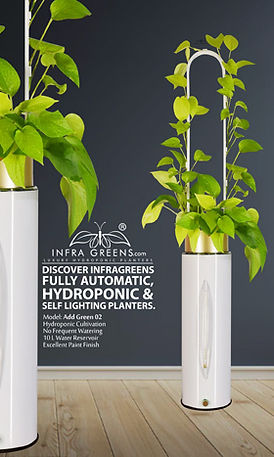Products
Self Watering: Winking Method and Drip Irrigation System
Full Spectrum Led Grow Light: Its an artificial light source designed to stimulate plant growth by emitting an electromagnetic spectrum appropriate for photosynthesis






Enterprise Solutions
Full Fledged Indoor Plantations Solutions for Hospitals, Corporate Offices, Hotels etc
Leasing and Rental Options Available

Options Available
Leasing
&
Rental
Options Available
Leasing
&
Rental

NASA Clean Air Study
NASA recommends two or three plants in 8 to 10-inch pots for every 100 square feet. Some plants are better at removing certain chemicals than others
INDOOR AIR IS 5 TIMES MORE POLLUTED THAN OUTDOOR

The NASA Clean Air Study was led by the National Aeronautics and Space Administration (NASA) in association with the Associated Landscape Contractors of America (ALCA). Its results suggest that certain common indoor plants may provide a natural way of removing toxic agents such as benzene, formaldehyde and trichloroethylene from the air, helping neutralize the effects of sick building syndrome.
The first list of air-filtering plants was compiled by NASA as part of a clean air study published in 1989, which researched ways to clean air in space stations. As well as absorbing carbon dioxide and releasing oxygen, as all plants do, these plants also eliminate significant amounts of benzene, formaldehyde and trichloroethylene. The second and third lists are from B. C. Wolverton's book[5] and paper[6] and focus on removal of specific chemicals.
NASA recommends two or three plants in 8 to 10-inch pots for every 100 square feet. Some plants are better at removing certain chemicals than others. Household chemicals come from objects and materials like:
Carpets
Glues
Ovens
Cleaning solutions
Synthetic materials such as plastic, fiber, and rubber

